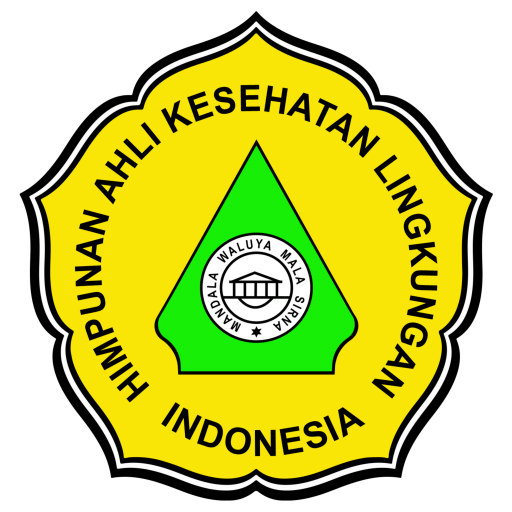EFFECTIVENESS OF "SM" TOOL TO REDUCE DETERGENT LEVELS IN LAUNDRY WASTEWATER
Abstract
Introduction: The use of detergent every year is increasing in line with the population growth rate in Indonesia. The impact of excessive use of detergent will result in pollution and damage to ecosystems and aquatic biota. The nature of detergents is to damage microorganisms. The dominant laundry waste comes from softeners and detergents. The research aimed to analyze the effectiveness of the "SM" tool to reduce detergent levels in laundry wastewater. Methods: This type of research was pre-experimental with a one-shot case study design. The independent variable was a tool to recycle laundry liquid waste into clean water "SM." The dependent variable was the detergent level (MBAS). The sample came from the laundry in the Kecamatan Baturraden area. Replication was carried out six times. Analyzing differences in detergent levels before and after being treated with the "SM" tool. The analysis used a paired T test. Result and discussion: The experimental results showed the “SM” tool could treat 960 liters of wastewater/day. The physical quality of the water after being treated using the “SM” tool, the water was colorless or clear, but it still smelled slightly fragrantly. The average level of detergent level checks before processing was 2.52 mg/L and after processing was 0.01 mg/L. The effective detergent parameter (MBAS) decreased by 99.51%, categorized as quite effective. The analysis using the paired T Test showed the p value of 0.239 with the lower and upper values being at one pole, meaning there was a significant difference between detergent levels before and after being processed utilizing the "SM" tool. Conclusion: Detergent levels (MBAS) after processing met the chemical quality requirements of clean water in accordance with Regulation of the Minister of Health Number 32 of 2017 concerning Environmental Health Quality Standards and Water Health Requirements for Sanitation Hygiene, Solus Per Aqua and Public Bathing Needs.
Keywords
Full Text:
PDFReferences
Utomo WP, Nugraheni ZV, Rosyidah A, Shafwah OM, Naashihah LK, Nurfitria N, et al. Penurunan Kadar Surfaktan Anionik dan Fosfat dalam Air Limbah Laundry di Kawasan Keputih, Surabaya menggunakan Karbon Aktif. Akta Kim Indones. 2018;3(1):127.
Gemala M, Oktarizal H. Rancang Bangun Alat Penyaringan Air Limbah Laundry. Chempublish J. 2019;4(1):38–43.
Majid M, Amir R, Umar R, Hengky HK. Efektivitas Penggunaan Karbon Aktif Pada Penurunan Kadar Fosfat Limbah Cair Usaha Laundry Di Kota Parepare Sulawesi Selatan. Pros Semin Nas IKAKESMADA “Peran Tenaga Kesehat dalam Pelaks SDGs.” 2017;85–91.
Sisyanreswari H, Oktian W, Rezagama A. Penurunan TSS, COD, dan Fosfat Pada Limbah Laundry Menggunakan Koagulan Tawas dan Media Zeolit. J Tek Lingkung UNDIP [Internet]. 2016;5(2):103–14. Available from: eprints.undip.ac.id/49597/
Setiawati DA, Putra GMD, Khalil FI, Zulfikar W, Hirjani H. Aplikasi Kombinasi Filter Bertingkat Untuk Pengolahan Limbah Cair Industri Tempe Di Kelurahan Kekalik Jaya Kota Mataram. Abdi Insa. 2019;6(1):13.
Sri Widya Astuti, Mersi Suriani Sinaga. Pengolahan Limbah Laundry Menggunakan Metode Biosand Filter Untuk Mendegradasi Fosfat. J Tek Kim USU. 2015;4(2):53–8.
Perda Provinsi Jawa Tengah. Perubahan Peraturan Daerah Provinsi Jawa Tengah Nomor 10 Tahun 2004 Tentang Baku Mutu Air Limbah. 2012;
Peraturan Menteri Kesehatan. Standar Baku Mutu Kesehatan Lingkungan dan Persyaratan Kesehatan Air untuk Keperluan Higiene Sanitasi, Kolam Renang, Solus Per Aqua, dan Pemandian Umum. Peratur Menteri Kesehat Republik Indones. 2017;
Luh Ayu Kartika Yuniastari S N, Wiyati RK. Pengukuran Tingkat Efektivitas Dan Efisiensi Sistem Eresearch STIKOM Bali. Konf Nas Sist Inform. 2015;9–10.
Tsabity MW, IW HR. Efisiensi Alat Pengolah Limbah Laundry Untuk Menurunkan Kadar Deterjen Di Desa Dukuhwaluh Kecamatan Kembaran Tahun 2016. Bul Keslingmas. 2017;36(4):378–85.
DOI: https://doi.org/10.31983/keslingmas.v39i4.6587
Article Metrics
Refbacks
- There are currently no refbacks.

Buletin Keslingmas (p-ISSN : 0215-742X, e-ISSN : 2655-8033 ), diterbitkan oleh Jurusan Kesehatan Lingkungan Politeknik Kesehatan Kemenkes Semarang Jl Raya Baturaden Km. 12 Purwokerto, Jawa Tengah, Indonesia. Telp/Fax. 0281-681709
Email : buletinkeslingmas@poltekkes-smg.ac.id
Buletin Keslingmas is licensed under a Creative Commons Attribution 4.0 International License

.png)
.png)
.png)









